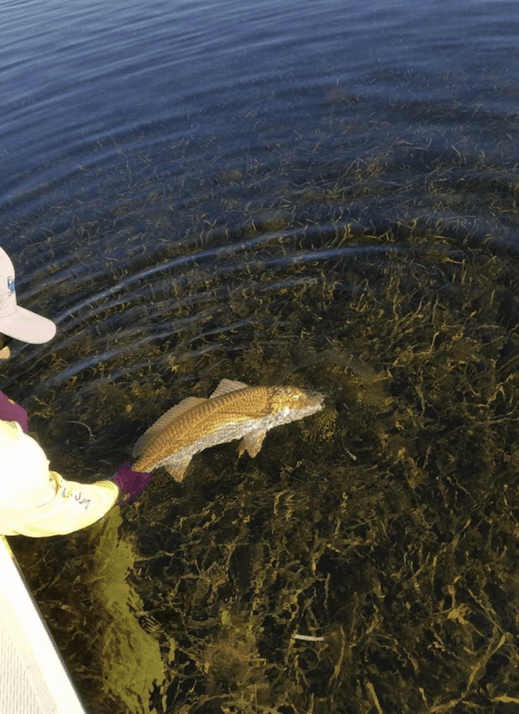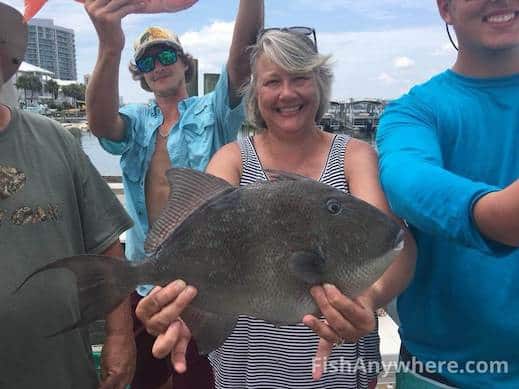Steinhatchee Fishing Charters & Guides
- 22ft Bay Boat
- Max Guests 4
- From $450.00
- View Available Trips
- 20ft Flats Boat Or Skiff
- Max Guests 6
- From $400.00
- View Available Trips
- 24ft Center Console
- Max Guests 4
- From $400.00
- View Available Trips
- 22ft Bay Boat
- Max Guests 4
- From $450.00
- View Available Trips
- 26ft Center Console
- Max Guests 6
- From $425.00
- View Available Trips
- 27ft Center Console
- Max Guests 6
- From $400.00
- View Available Trips
-
The average cost for a four hour trip in Steinhatchee is $432, while the average cost for an 8 hour trip is $775. Prices can vary based on trip duration, boat size and amenities, and the type of fishing your group is looking to do. View all Steinhatchee Charters here.
-
There are no shared trips currently available in Steinhatchee. View all Steinhatchee Charters here.
-
The most common charter boat types in Steinhatchee are:
Flats Boat Or Skiff
Center Console
-
The average charter boat size in Steinhatchee is 22 feet.
Steinhatchee Fishing Charters
Located on Florida's Big Bend in the Gulf of Mexico, Steinhatchee retains a lot of its commercial fishing community roots. When scallop season is in, Deadman Bay sees lots of boats anchored and snorkelers gathering the tasty bivalve. This area of Florida was first inhabited by people about 12,000 years ago. Archeologists find evidence of fishing in Native American sites frequently. Some people walk the beaches and flats at low tide to collect pottery shards, beach glass, other artifacts and the occasional fossil. Collecting exposed items like this is legal. Digging for them is not. The community has plenty of outdoor recreation possibilities beyond just walking the tide lines. Fishing here ranges from explosive to fair, depending on the fish pursued and weather conditions. One thing redfish and trout anglers appreciate is the huge number of tidal creeks in this area. There are so many, it could be confused with a Mandelbrot set.
Steinhatchee Freshwater Fishing
Steinhatchee is on the north side of the mouth of the Steinhatchee River. This fairly short river, 34.5 miles long, offers fair freshwater fishing up the river. As the river gets smaller and more narrow, access is the issue. Eventually, any fishing has to be done from the bank because even the smallest boat cannot get through. Bass and bream are the primary targets for anglers. Use spinnerbaits and plastic worms for the bass. Bream, a group name for panfish in the river, are mostly caught with minnows, worms and crickets on a pole. The river does have catfish, but the hardhead catfish is also found in the river. This version of Mr. Whiskers is very poor table fare. In the very upper reaches, redfin pike are a local secret. These fish are very small but make up for that with attitude. They will strike anything that moves. Redfin are also very bony. Cooks vertically slash the tube-like body of the pike every half inch or so before rolling them in cornmeal and flour. The deep-frying process then destroys the bones.
Steinhatchee Inshore Fishing
Where fresh and saltwater begin to mingle and create brackish water, freshwater and saltwater fish come together. In these places, throwing an artificial shrimp could see you catch a red, a bass, a flounder or even a trout that wandered upriver. The same fake shrimp, live and cut bait can be fished under a popping cork with excellent results. As the salinity rises, the freshwater fish become more scarce and the saltwater fish become more common. When the tide is moving water, the many tidal creeks in the area become redfish, trout, black drum and flounder feeding stations. If you want to catch big bull redfish, use big cut bait and big live bait. Gator trout are found out on the flats. Look for sandy patches in the grass and trout are likely nearby. These tidal creeks often have sharp ledges. The water goes from a couple of feet deep to 10 feet or more. This is where you will find flounder. Take a live shrimp with just enough weight to cast. Throw above the drop off and let the current roll the bait down the ledge. Black drum are almost always caught on cut bait fished on the bottom. These fish like slow-moving targets.
Steinhatchee Offshore Fishing
If the trout and reds are not cooperating, head into deep water and the reefs and shipwrecks that sit off the Steinhatchee coast. The triggerfish, snapper, and grouper bite is solid all year long. Drop live menhaden, pinfish or cut bait over the side of the boat as the boat stays over the reef. Triggerfish, with small mouths, need smaller hooks. Pieces of squid are excellent triggerfish bait. You can even catch the bait you need on the reef with a Sabiki rig you make yourself or buy ready-made. When the weather and water warms up, cobia, tuna, wahoo, mahi mahi, king and Spanish mackerel move in. These fish rarely stay in one place very long so most Steinhatchee fishing charters will troll to find them. If you find a school of dorado or dolphin, as the mahi mahi is also known, the captain will encourage you to throw jigs and bucktails to the fish. As long as you keep one on the line in the water, the rest will generally hang around. Doing this means you can catch the big ones and let the smaller ones go. Jigging lures on the bottom is another way to pull reef dwellers to the surface. Offshore jigging lures come in all kinds of colors and body types. Bright and flashy work best.
Book A Steinhatchee Fishing Charter
Ready to get on the fish? Ready to have a great time? FishAnywhere has the Steinhatchee fishing charters that turn your wish into reality. Let's make it happen.



